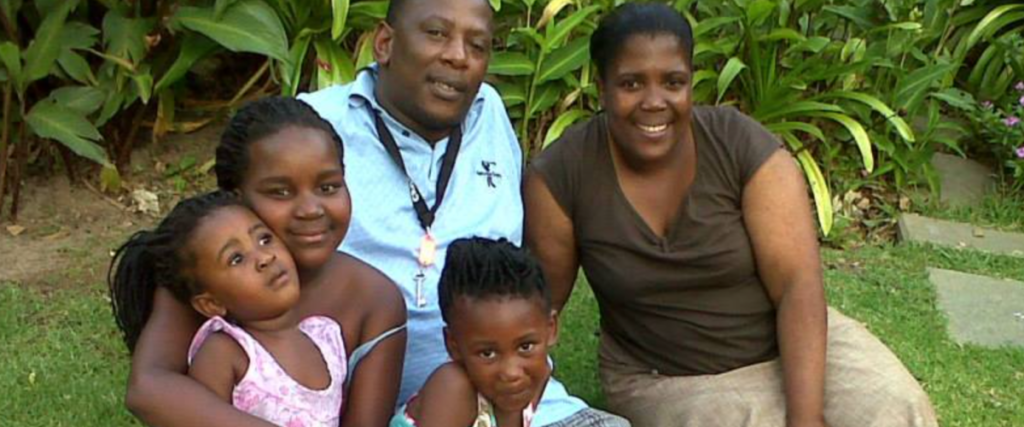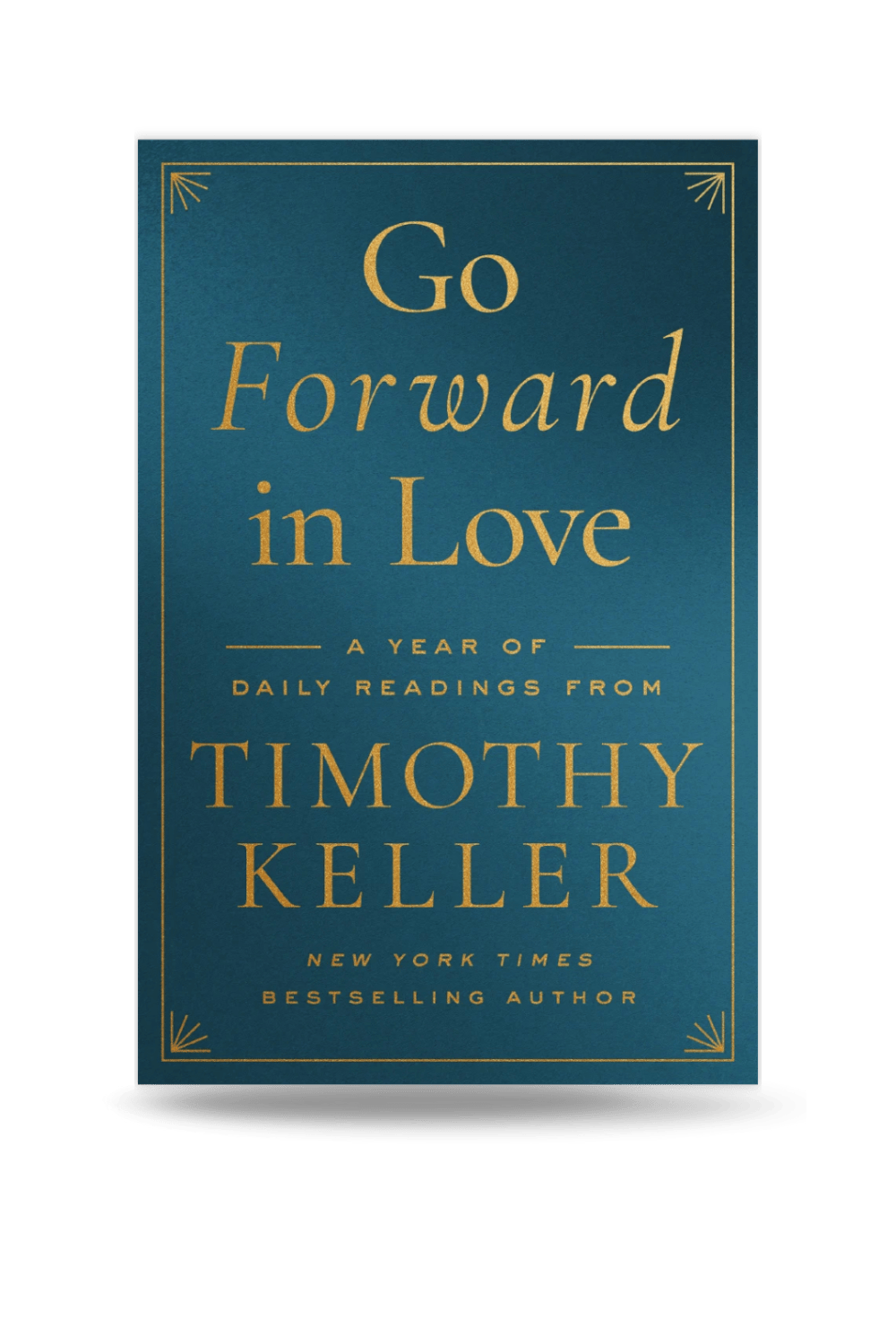Introduction: by Al Barth
Al Barth, who has served as a Global Catalyst for Redeemer City to City in the cities of North America, Europe, Africa, and the Middle East since 2001, helps raise up leaders to develop urban center churches. His introduction to Pastor Makapela helps set the context for why this interview is featured in Life in the Gospel.
Sometime before 2015, I met Pastor Peter Makapela and recommended him and his Christ Church Strand ministry to Redeemer Presbyterian Church’s short-term mission, as an ideal ministry to serve. Peter is a unique and respected leader in a denomination that is striving to serve the “New South Africa,” a nation that is struggling to overcome a racially divided past and is made up of a wide variety of people from any number of ethnic and tribal backgrounds. His testimony is the story of a young black South African that grew up hating his white oppressors until God changed his heart through faith in Christ. He is now one of the most important leaders of the Reformed Evangelical Anglican Church of South Africa and is bringing radical change to that denomination. As part of the array of leaders and churches to which Redeemer City to City has related and encouraged to boldly preach the life-changing gospel, it has been our privilege to send teams to help them in their ministry.
An Interview with Peter Makapela: One man’s journey from racial hatred during South Africa’s apartheid years to a voice for racial reconciliation
Q. Pastor Peter, what are your present ministry endeavors?
A. I’m the pastor of a church I planted in 2007 called Christ Church Strand in Nomzamo, which is a 60,000-person township community near Cape Town, South Africa. CCS is a part of the REACH SA denomination.

Q. You’re not originally from the Nomzamo area, correct?
A. No. I was born in a rural village in the Eastern Cape. My mother and I had been abandoned by my father, and my mother had to leave me to be raised by my grandparents while she moved to Cape Town to look for work. I was one of several grandkids, and we all lived in a rondoval, a round, one-room mud-brick hut common in the South African countryside.
When I was twelve, I went to live in Cape Town with my mother, who by then was earning a modest living selling vegetables from a cart.
Q. That must have been a shock – to go from the poor, rural countryside to a big city…
A. Yes it was. I struggled to adjust to the hustle and bustle of a big city. Worse, life in the city also made it easier to see the effects of apartheid: segregated neighborhoods and transportation, no voting rights, mandatory identification passes, limited employment and education opportunities. The blatant racism was hard to endure, and an injury I sustained during an apartheid protest left me a very angry man. My home environment had completely changed as well. My grandparents were Christians, but no one in this new environment was. My aunts and uncles always seemed to be drinking. One thing stayed the same in my life, the poverty. There was never enough to eat in the three-room shack I shared with my mother and three siblings and 14 extended family members. We often only ate just a bowl of pap each day (a low-nutrition starch similar to grits).
Q. What do you remember of the apartheid years?
A. During apartheid, 10% of the country was white and 80% was black. Yet, it was that 10% that possessed all the political, social, and economic power. Since I was in school, I really noticed the inequality there. Black children, especially in rural areas, were forced into crowded one-room schools that lacked books, trained teachers, and equipment. We black learners (students) resented our white peers who faced none of those problems in their schools, and we hated the injustice of it all. Although Nelson Mandela was released from prison in 1990 and apartheid was officially dismantled by 1991, political and social unrest still rocked the country. I took an active part in the unrest—I was the first to take a stone and throw it at white people. Anger had such a hold on me, I began to drink heavily, and spent all my free time playing soccer.
Q. Tell me about that protest and the injury you mentioned…
A. It was 1989, a year when the country was under a lot of civil unrest and turmoil because of the oppressive apartheid laws. I was 14 then, and my cousin Xolani and I joined other schoolchildren in Cape Town to protest the miserable conditions in the local black schools. At least 100 other black kids and teens, many wearing their school uniforms, gathered at the protest site. Police armed with rifles and clubs begin to encircle us with barbed wire. Suddenly, someone fired a gun while gas exploded around us. Someone began screaming, “Pepper spray!”
Children began running in every direction trying to escape, but we found ourselves trapped in the barbed wire. I lost Xolani in the crowd. I could see a narrow opening through the smoke, and I watched several of the kids run toward it, but policemen were lined up and clubbing anyone who broke out of the barbed wire. I didn’t want to get beaten, so I decided to jump over the five-foot barbed wire fence. Driven by adrenaline, I ran to the fence and jumped, and I almost cleared it, but my pant leg got caught on the wire on my way down, leaving me hanging upside down. A policeman ran to me and yanked me down by the arm; I was screaming in pain. It was a pain so intense, at 47 years old I still have never felt anything so terrible. On the ground, I looked up at the fence and realized a chunk of flesh from my leg was hanging there.
As I began to go into shock, I heard a shot close by and felt a body collapse on top of me. Blood ran over me, and I tried to crawl out from underneath it. When I got free, I looked back and could see it was an old man who the police had killed. Then I passed out. When word of the violence spread, my relatives raced to every clinic and hospital searching for me (Xolani had made it out okay). They couldn’t find me, and assumed I’d been killed. My mother returned home and put on traditional Xhosa mourning clothes. Eventually we were able to connect. But I stayed in the hospital a long time. From then on, I hated white people. I just thought, “They’re very bad people. I’ll hate them until the day I die.”
Q. How did you become a Christian?
A. A white woman made a big impression on me. Few white people other than police ever came to the area, so I was surprised one day to see a white woman pass by my home. I followed her to see what she was doing. She introduced herself as Laura Haas, a British missionary who had come to the neighborhood to pass out food parcels, tutor local children, and spend time with families. I spent time with her, and would sit with her and listen to her talk about Jesus.
I thought, “That white woman—she’s not like the others. I thought all white people were mean and bad, but maybe I was wrong. This one says she loves Jesus—maybe the nice ones are the ones who say that.”
An experience I had in college, however, changed my life. I had gotten serious about school, and I began working hard at a grocery store to be able to afford classes. One Saturday, after one of my shifts, I ran to catch the very end of a sermon at a church camp I’d been invited to. When I got there, everyone was crying and lifting their hands as they praised Jesus. “What happened? What did I miss?” I asked a friend.
My friend said, “The pastor just preached about how Jesus is the way, the truth and the life, and that Jesus must be in your heart.” Then he told me all he could remember about the pastor’s sermon. It was so powerful, even being told about it second-hand made me want to receive Jesus. I walked to a corner and prayed and cried, “Jesus I need you in my heart!”
I was a changed person. There was such joy in my heart! I wanted everyone to receive this Jesus and feel what I was feeling.
Q. Who discipled you? How did your faith grow from there?
A. I became involved in church and the young adult ministry. Pastor Siegfried Ngubane took me under his wing and began mentoring me, becoming a father figure to me. He helped me get into a Bible college, where I spent the next three years. I graduated in 2004, began serving at a church in my township, and even married Pastor Ngubane’s niece, Mpumi, in 2006. We have three daughters. I love being a parent, and try hard to be the father I never had. But it’s not hard—I love my daughters.

Q. Why a church plant?
A. Soon after my marriage, I was asked to start a new church in Nomzamo. Mpumi and I and a few others went door to door, inviting the community to the new Christ Church Strand. We had no strategy, no help, little funding, and no connections. We just trusted God. By God’s grace we received a piece of land that someone was kind enough to purchase for us. We installed a small shack and had crates for chairs. There were no toilets and no electricity. We were the only church in the area. In 2007, seven people came to our church. In 2008, our attendance increased by 100%—seven more! (laughs) Today, about 100 people attend Christ Church Strand on Sundays, and several community groups are held in homes.
In 2007, seven people came to our church. In 2008, our attendance increased by 100%—seven more!
Q. I understand this is an economically-challenged area. How does your church address needs?
A. Food insecurity is real—people don’t have enough to eat. And a lot of people take medication for HIV/AIDS, and they must take the meds with food. I knew we had to address this.
We had about thirty people attending church, and most of them were low-paid domestic workers who also lived hand-to-mouth. I asked them to bring whatever they had in their home to help the less fortunate. They brought small bits of food and we made soup with it, and that’s how we started our soup kitchen. Now, that small soup kitchen has expanded to four feedings per week in two locations serving a hundred people. People will walk 1.5-2 kilometers to come to our soup kitchen.
In 2012, Christ Church Strand opened a Monday–through–Friday preschool for working parents. About 75 children attend the all-day school, which employs five staff members and provides breakfast and lunch for all the children. The church’s preschool is one of only two in the area, and it offers multiple benefits to so many families. Kids are so glad to be fed at our church because some of the kids know they won’t eat for the weekend.
The church also offers after-school programs and sleep-away camp for kids and teenagers. More than 100 youngsters who want to learn more about Jesus make up the church’s youth department. In our community we have a challenge to keep kids out of trouble. Most kids live with single parents who commute to jobs far away. Our aim is to influence them to turn to God. We teach life skills because they come from backgrounds where these things are not encouraged.
We have also been trying to help community members get jobs—the 2022 unemployment rate in the township currently stands at 43%. We have a sewing school at the church and we’ve paid for driving lessons for several individuals so they can work as truck drivers. The church is constantly looking for funding so it can help more community members obtain skills for employment.
Q. It’s been many decades since you were hospitalized. When you look back, what strikes you about your transformation?
A. I still have a deep scar where my flesh was ripped off my leg, and the scars of racism in this country still exist. But I no longer believe my anger can bring about change. There is only one answer: Jesus Christ. By the grace of God, when I came to know Christ, my heart was radically transformed. Because it is impossible when one has received the grace of God to continue walking around with hatred. It’s impossible when one has received the grace of God to continue being a racist. One of my favorite hymns was written by a Xhosa pastor, Rev. Tiyo Soga, who in 1856 became the first black South African to be ordained as a minister.
But I no longer believe my anger can bring about change. There is only one answer: Jesus Christ.
“Lizalis’ idinga lakho” says that all nations and all races must be saved, all knees in this world and all tongues will proclaim your glory. The truth that Soga wrote about was true then and is true now—one day all races will declare the glory of the Lord, not just white or black—ALL of us. And in our own small corner of the world, Christ Church Strand is trying to influence our land for Jesus Christ.




